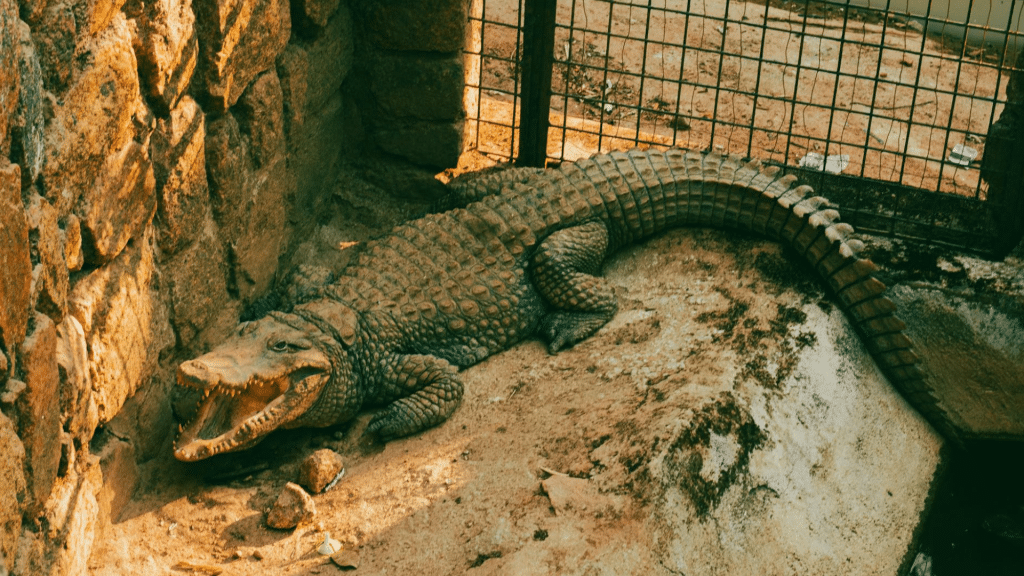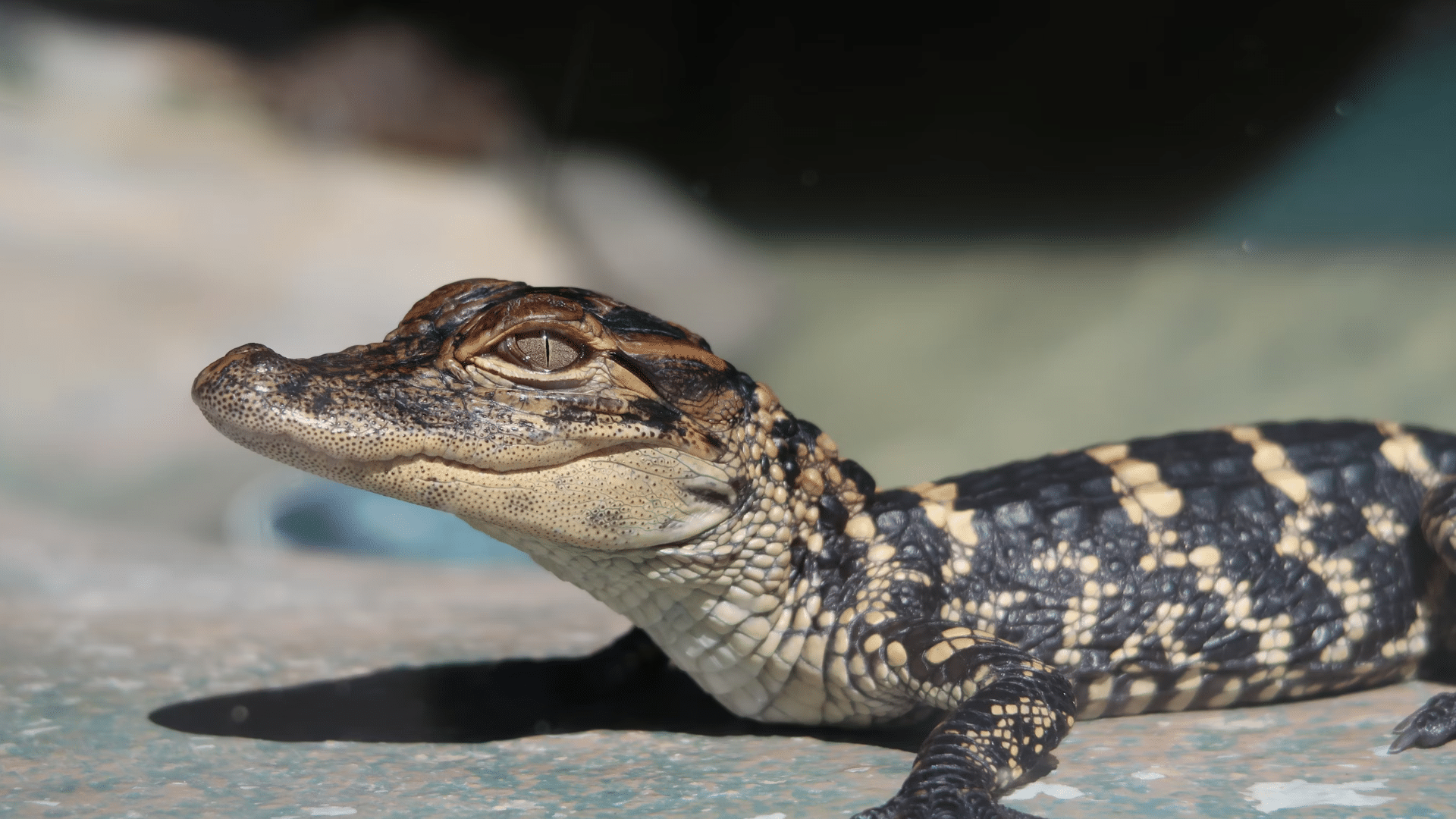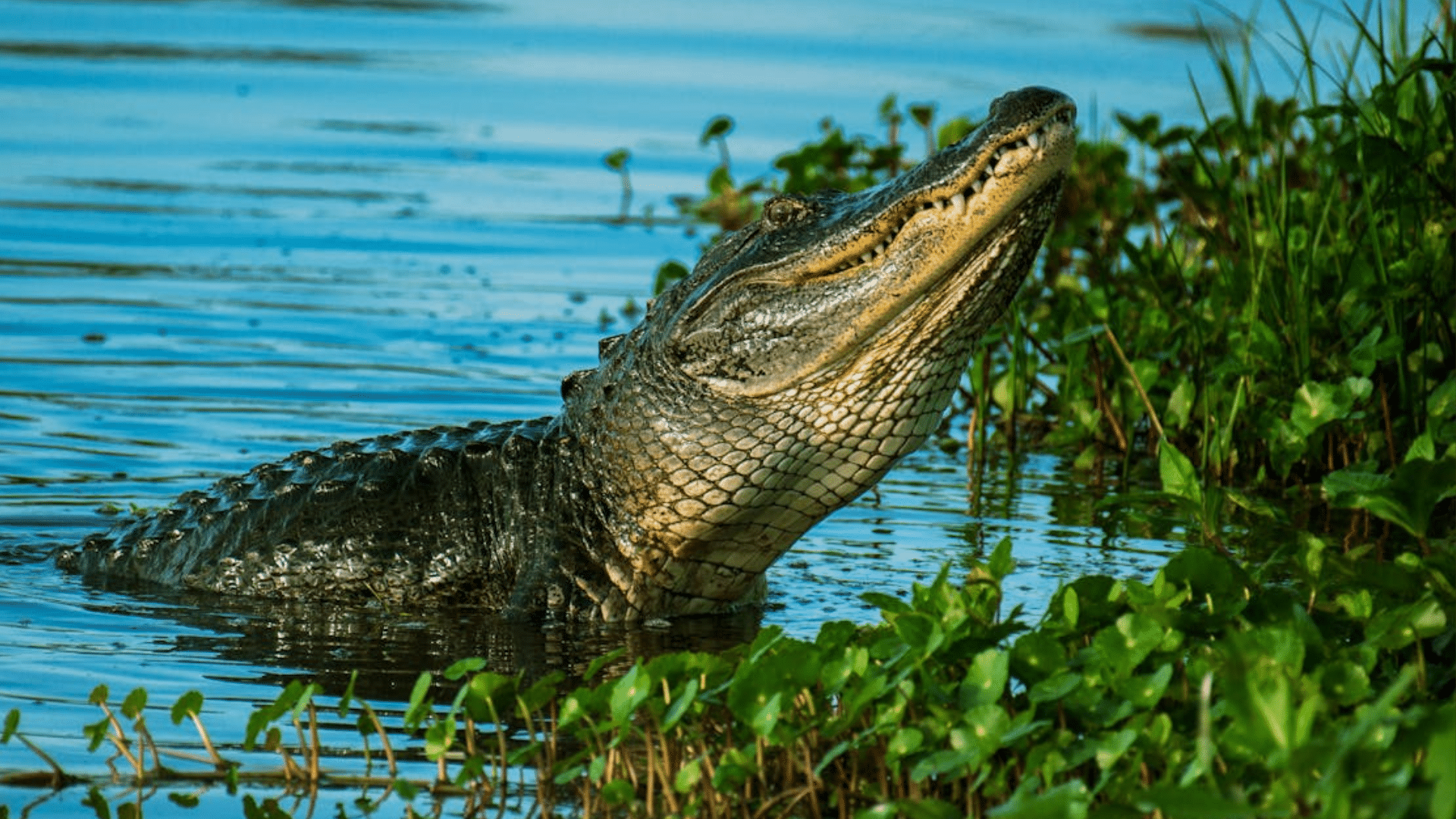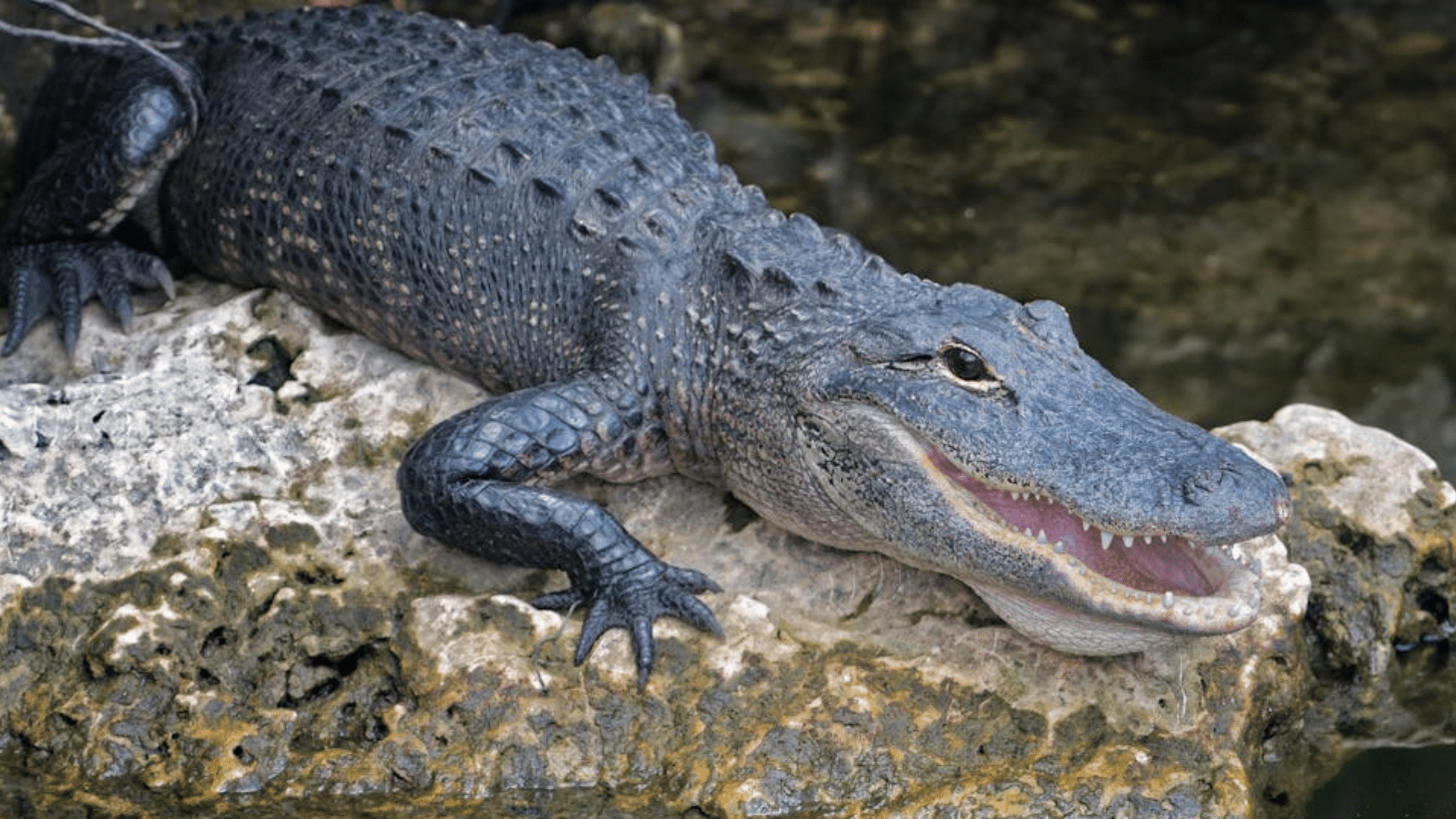You’re walking along a sunlit riverbank and suddenly, you spot an alligator lounging in the shallows.
What color is it? Green? Black? Or perhaps something else?
Alligators come in a variety of colors; their colors change as they grow and adapt.
However, understanding these color variations reveals how alligators adapt to their surroundings and how their color helps them hide and survive at every stage of life.
To know in detail, keep reading more about the world of alligators’ color below.
The Color Evolution: From Hatchling to Adult
Alligators undergo an amazing change in coloration as they grow, adapting to their changing environments and roles in the ecosystem.
1. Baby Alligators
When alligators hatch, they are about 6 inches long and weigh around 2 ounces. Their bodies are dark, almost black, with bright yellow stripes running across their backs and tails.
These stripes help them blend into the grassy wetlands and muddy waters.
And, this coloration is temporary and serves as protection during their early, vulnerable stages. As they grow, the bright yellow stripes begin to fade, and their skin darkens.
This change in color helps them blend into their changing environment and continue to stay hidden from potential threats.
Fun Fact: Hatchlings use a special “egg tooth” to break out of their eggs and start life at just 6–8 inches long.
2. Young Alligators
As alligators mature, their coloration changes to a dull greenish-gray. This helps them blend into the murky waters and shadows of their habitat.
At this stage, they are still relatively small and continue to rely on their camouflage to avoid predators.
The greenish-gray color also aids in hunting, allowing them to approach prey without being easily noticed.
This coloration is a significant adaptation to their environment, enhancing their survival chances as they grow.
Fun Fact: Juveniles stay close to their mother for protection and grow rapidly, doubling or tripling in size within a few years.
3. Adult Alligators
Fully grown alligators are typically dark gray-brown or nearly black, aiding in camouflage within their swampy habitats.
Their undersides remain cream-colored, providing a stark contrast that aids in camouflage against the dark, tannin-rich waters they inhabit.
This darker pigmentation is ideal for camouflage in their murky habitats, where they hunt and avoid detection by both prey and potential threats. The specific shade can vary depending on the environment and the individual alligator.
These color changes highlight how alligators adapt to their environment, ensuring survival through effective camouflage and predation strategies.
Fun Fact: Once reaching about 4 feet, adults become nearly invulnerable and grow up to 14 feet, ruling as apex predators.
How Alligator Colors Reflect Their Environment
Alligators are like nature’s chameleons, adjusting their colors to blend into their surroundings.
Their skin tones aren’t just for show, and they help them stay hidden from predators and sneak up on prey.
- Water Quality: Alligators living in waters rich with algae often appear greener due to algae adhering to their skin. Conversely, those residing in tannin-rich waters, such as swamps with many overhanging trees, can develop darker, almost black hues.
- Sun Exposure: Alligators bask in the sun to regulate their body temperature. In sunnier areas, they might appear darker, helping them absorb more heat.
- Diet: An alligator’s diet can also influence its color. For example, consuming certain types of prey or vegetation can lead to subtle changes in skin pigmentation.
- Seasonal Changes: As seasons change, so does an alligator’s coloration. In colder months, they might appear darker to absorb more heat, while in warmer months, they might lighten.
Understanding these factors highlights how alligators adapt to their environments, ensuring their survival through effective camouflage and predation strategies.
Rare Alligator Colors
Beyond the typical color changes from hatchling stripes to adult camouflage, nature occasionally creates truly extraordinary alligators with unique genetic colorations that defy the normal survival rule.
| COLOR TYPE | APPEARANCE | RARITY | EXAMPLE |
|---|---|---|---|
| Leucistic | White or pale skin with some pigmentation; usually normal or blue eyes. | Very rare; about 7–10 known worldwide. | A leucistic alligator born at Gatorland, Orlando. |
| Albino | White skin with pink eyes due to a lack of pigment. | Rare; around 100 known globally. | “Claude,” an albino alligator at the California Academy of Sciences. |
| Melanistic | Dark pigmentation causes a very dark or black appearance. | Extremely rare; few confirmed cases. | No widely confirmed melanistic alligators are known. |
Best Time and Tips For Spotting Alligators
Do you want to see these reptiles in their natural habitat? Knowing when and where to look makes all the difference in your gator-watching success.
Here’s what you should know:
Early Morning & Late Evening: Alligators are most active during these cooler parts of the day. Their colors are also more vibrant and easier to observe during these times.
Rainy Season (May–November): Higher water levels and abundant food make alligators more active and easier to spot. Their coloration may appear more pronounced during this period.
Here are some tips on spotting alligators more effectively and safely:
- Guided Tours: Join airboat or swamp buggy tours in places like the Everglades for safe and informative alligator sightings. These tours provide opportunities to observe alligators in their natural habitats and notice variations in their colors.
- Stay Safe: Keep a safe distance (at least 60 feet) from alligators and never feed them. This ensures both your safety and the well-being of the alligators.
Fun Facts About Alligator Colors
Colors help alligators survive in their environments. Here are some fun facts:
- Baby Alligators are Striped: When they hatch, baby alligators have bright yellow and black stripes, which help them blend into grassy wetlands and avoid predators.
- Leucistic Alligators are Extremely Rare: These alligators are white or pale with some pigmentation and often have blue eyes. They are very rare and found in specialized wildlife facilities.
- Albino Alligators Lack Pigment: Albino alligators have white skin and pink eyes due to a complete lack of pigmentation, making them extremely rare and usually found in captivity.
- Glow in the Dark Eyes: Alligators have a layer behind their eyes that reflects light, causing their eyes to glow red when caught in a flashlight beam at night.
- Color Shows Health: A healthy alligator usually has vibrant colors, while a pale or discolored alligator may be ill or stressed, signaling changes in their health.
Conclusion
Alligator coloration is more than just skin-deep; it’s an important aspect of their survival. Their colors play a crucial role in hunting and protection.
Additionally, rare color variations, such as leucistic, albino, and melanistic alligators, showcase nature’s duality and adaptability.
These unique traits not only delight our imagination but also highlight the complexity of wildlife.
Supporting conservation efforts and visiting wildlife preserves can help protect their habitats and ensure these mysterious reptiles continue to thrive.























